You want to start thinking about your home’s interior design style more seriously but you’re not a designer and don’t know what style you like. First let’s learn what the names of interior design styles! We’ve compiled a list including the names of interior design styles currently on trend so you can get an idea of what you gravitate towards. This will help you plan out the design of your spaces at home.
Decorating your home can be a lot of fun, but it can also be challenging if you don’t know where to start. One of the first things you need to do is decide on an interior design style.
Some common interior design styles known by the masses are: Traditional, Contemporary, Scandinavian, Mid-Century Modern, Industrial, Modern and Minimalism to name a few. Interior design is a way of expressing yourself and your interior design style should reflect your personality. Therefore, when choosing an interior design style, be sure to explore the details that make each of these styles unique and attractive.
1.Midcentury Modern
2.Minimalist
3.Scandinavian
4.Industrial
5.Traditional
6.Modern
7.Contemporary
8.Transitional
9.Farmhouse
10.Eclectic
11. Organic Modern
12. Southwestern
13. Maximalist
14. Bohemian
15. Japandi
There are plenty of ways to figure out what your decorating style is. In fact, you can scroll through Pinterest and see what catches your eye. Or you can simply take a decorating style quiz that give you a series of questions that correspond to different home decor styles. The quiz results should give you some indication of your own style. An interior design style quiz would definitely help you get an idea of what you like. But first we’ll introduce you to a few names of interior design styles you’ve probably seen most often.
Top Interior Design Styles:
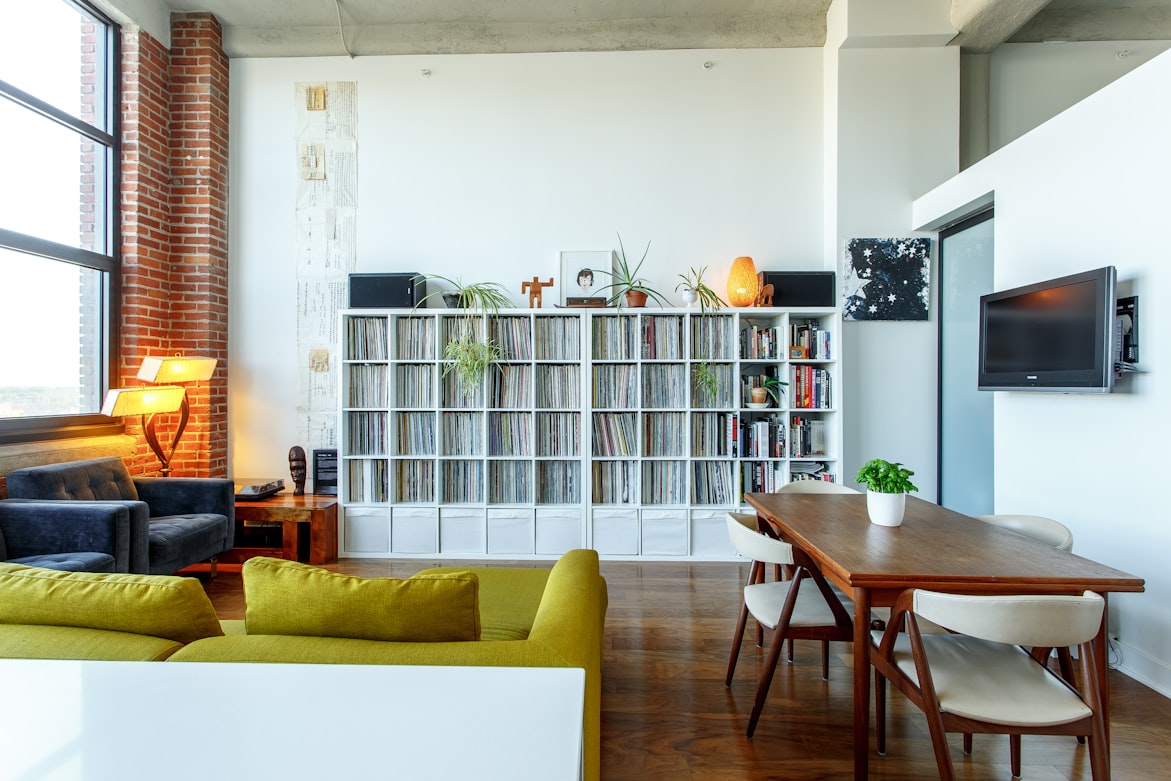
MIDCENTURY MODERN
MIDCENTURY MODERN: This popular interior style blends streamlined, clean design with natural elements. It’s often characterized by slim silhouettes on furniture and accessories. Midcentury modern is a great way to add a bit of vintage flair while still maintaining a contemporary look.
An interior design style obsession for the books, midcentury modern interior design continues to be one of the popular interior design styles. Quite the buzzword that it is, Midcentury Modern can be attributed to many interior elements. Some of those things are artwork, architectural details, furniture etc. With it’s origins coming from the mid-20th century, the design and style is a derivative of the 1950s and 1960s styles.
This particular style of interior design was meant to have a modern twist on classic designs from the past. Midcentury Modern design is also characterized by its clean lines, muted colors, and natural materials such as wood. An obvious focus on functionality, this popular style also takes note of forms.
These days midcentury modern offers more than just furniture and decor. It also has a major influence in the world of interior design. From wall treatments to home accessories, midcentury modern is all about that classic style with a modern twist. Furniture styles are often pretty distinct in their shapes too.
It’s an interesting balance between form and function that can be seen all over the world today. Whether it’s in a home, office, or even public spaces, Midcentury Modern design is still prevalent and highly sought after for its timelessness. With its popular appeal continuously growing, this style of interior design continues to be on trend. A design style once considered to be passé, is now very much back in and here to stay.
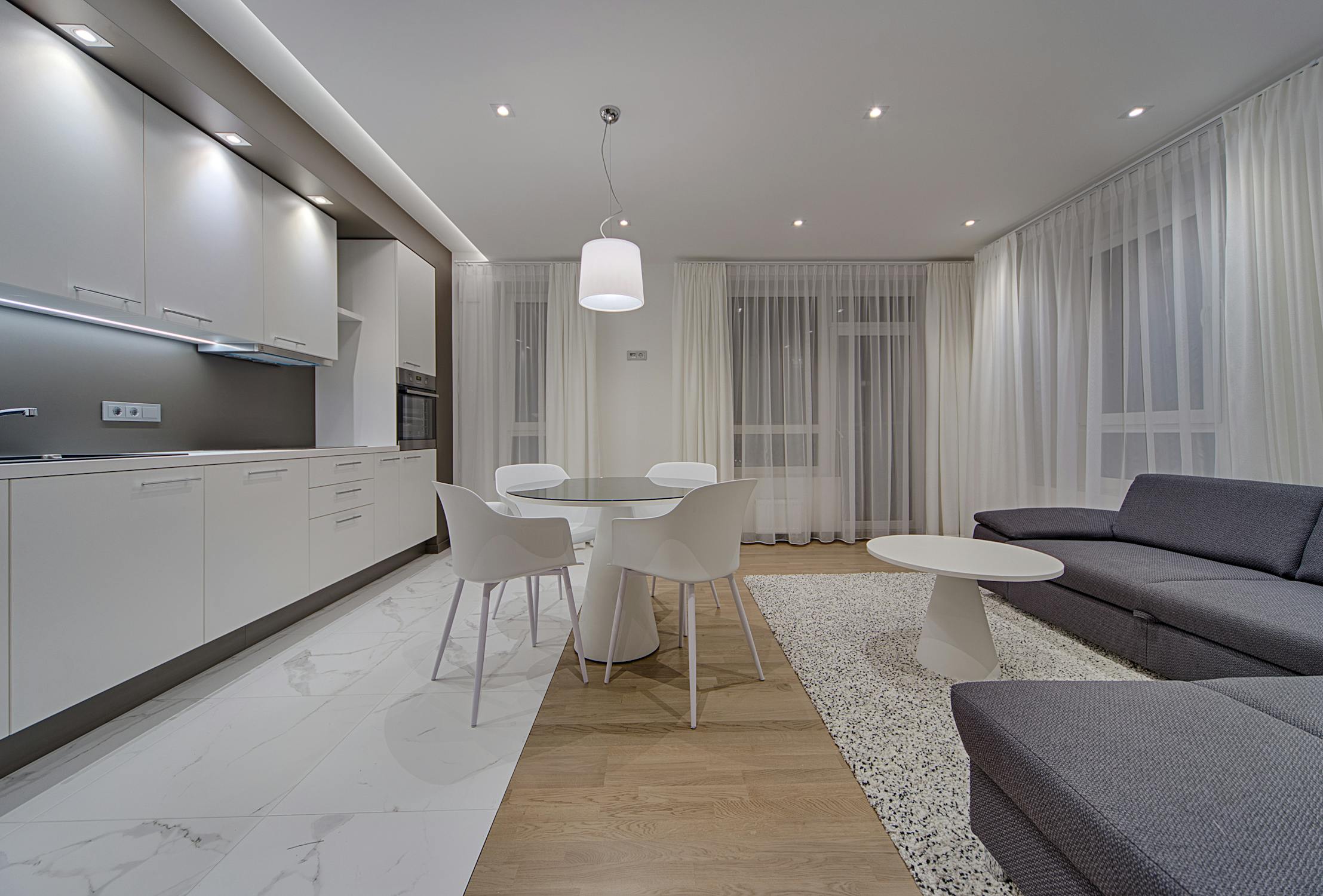
MINIMALIST
MINIMALIST: Minimalism is all about creating a clean, uncluttered space using only the necessary elements to create an overall look. This could be as simple as using muted colors and subtle textures on furniture and accessories.
The minimalist style consists of simple lines and shapes, neutral colors and minimal furnishings. This type of design creates a calming environment that can be very appealing to those looking for a sense of peace and tranquility in their home or office space.
The idea is to create an atmosphere that emphasizes simplicity while still being visually pleasing. The key to a successful minimalist interior is to add just enough detail and texture to keep the space from looking overly sterile. In recent years, variations of minimalist styles have been adapted too.
Types of minimalism styles that have been born are: feng shui minimalism, extreme minimalism, warm minimalism, or eco-minimalism, just to name a few. Warm minimalism, for example has become increasingly popular as more people are looking for ways to make their homes feel inviting and comfortable while still embracing the simplicity of minimalism. While an eco-minimalist design is all about creating a home that focuses on environmental friendly materials and products when possible.
Ultimately minimalism goes beyond the physical interior design aspects of a space, it incorporates an attitude towards life. It encourages us to take stock of what we have in our lives and make sure that everything we own serves a purpose or brings us joy.

SCANDINAVIAN
SCANDINAVIAN: ought to be one of the most influential design movements of the 20th century, Scandinavian interior design is known for its simplistic elegance. Characterized by an emphasis on natural materials and clean lines, this style originated in Nordic countries such as Norway, Denmark, Sweden, Iceland and Finland in 1950s-1960s period.
This style is all about keeping things minimal and tasteful. Clean lines and sparsely furnished rooms are the hallmarks of this look. It’s a style that focuses on creating airy, light-filled spaces with an uncluttered feel.
The color palettes usually consists of whites and neutrals along with some lighter shades of blues, greens, yellows, etc. Touches of wood, leather, fur and wool are common materials used in Scandinavian interiors.
Scandinavian style furniture pieces often feature a mix of modern lines along with natural textures to create an interesting balance between form and function. Furniture tends to be practical but still aesthetically pleasing—think understated sofas or minimalistic dining tables.
This style focuses on natural, warmth, function and simplicity and a general connectedness to nature. Colors are usually monochromatic and soft. Texture plays a huge roll in this style as well such as in the walls, rugs, fabrics and are often contrasting. Window treatments are usually kept bare or with lightweight and using natural material. And above all, natural light is prioritized. You’ll notice lots of natural elements such as birch wood furniture, or natural plants inside the home.
This design style is the result of an interior style born from function and form. The Scandinavian design sometimes referred to as Scandinavian minimalist is a definitely a favorite. If you haven’t had a chance, take a look at 6 HYGGE ELEMENTS THAT WILL ELEVATE YOUR SMALL LIVING SPACE for Scandinavian styles and design ideas. That article touches on hygge, a Danish interior style, which is quite similar to this Scandinavian.
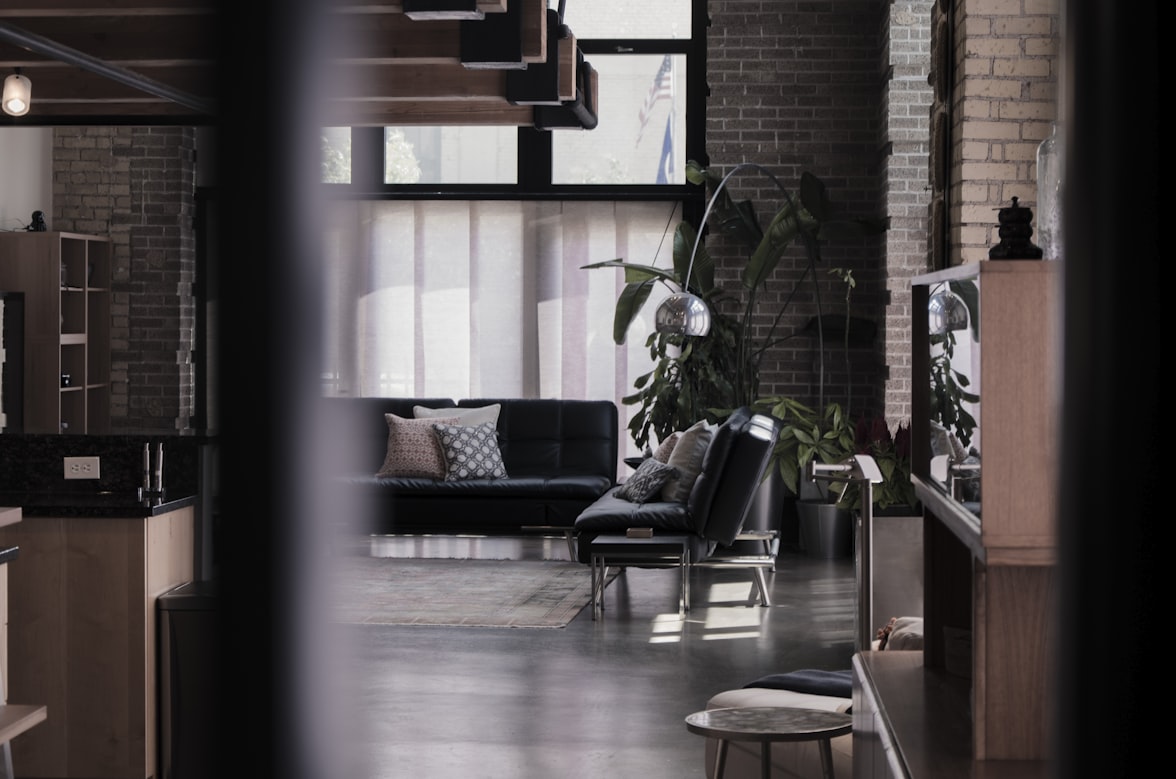
INDUSTRIAL
INDUSTRIAL: industrial design style has been around for a while and it is really making its mark in modern interior design. Elements of industrial design are all about raw materials, exposed surfaces, and bright colors that make a space look both bold and stylish. This design style is characterized by an eclectic mix of metals, woods, concrete, and other industrial elements like pipes and valves.
The industrial interior design style is one that is readily recognizable. Marked by it’s open plan concept oftentimes and visible architectural details. You may find this interior style usually in open concept floorplans or lofts, converted warehouse homes, etc. Those details really make this interior design style what it is. Brick, concrete, metal, undone walls, wood beams and glass partitions are all elements that are commonly seen in industrial interiors.
Lighting plays a huge and important role in industrial interior design. It also is often cohesive to the architectural style of the space. Comparatively to Scandinavian design, there are similarities in the contrasting textures and finishes and creating some tension in a space. Those contrasting elements in other words, contribute to a softer more inviting home atmosphere. A good example of this would be a plush velvet couch near a brick wall, or sheepskin rugs on concrete floors.
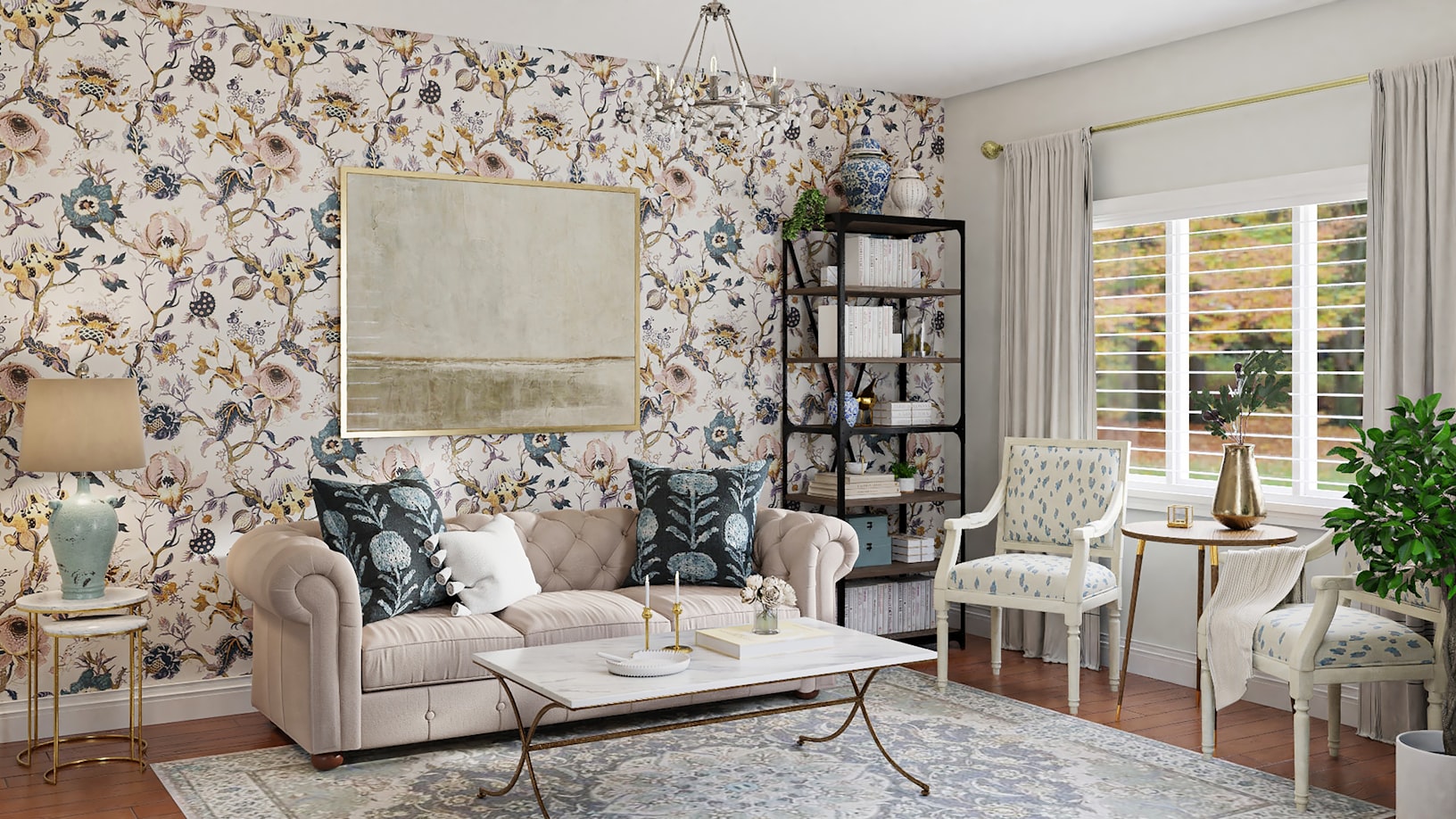
TRADITIONAL
TRADITIONAL: Traditional interior design is marked by elegant furnishings, comfort, and luxe details. This style of decorating often utilizes ornate or intricate architectural details such as high ceilings, detailed millwork, crown molding and carved stone fireplaces. Traditional interiors are filled with antique furniture pieces, lush fabrics and muted colors.
The traditional design style encompasses a wide range of periodic furnishings, which may be difficult to fully comprehend. Although the style is rooted in history, it is associated with classic American interior design. Traditional design emphasizes the placement and symmetry of furnishings. This involves arranging items in pairs, maintaining balanced layouts, and incorporating complementary elements. Florals, prints, and patterns remain popular features of this style.
Everything from the drapery to the furnishings maintained characteristics such as ordered layouts, things in pairs, complimentary and balancing elements. Florals, prints and patterns are still markings of traditional style.
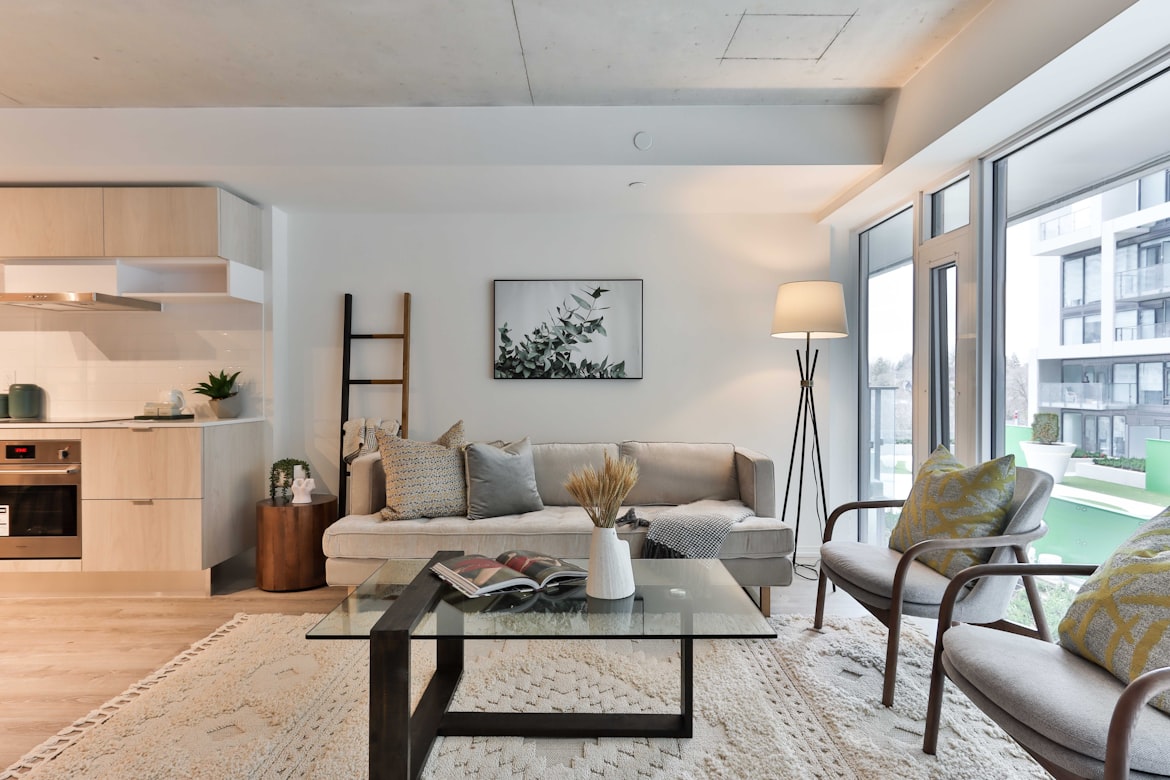
MODERN
MODERN: Modern interiors are characterized by clean lines, minimalistic elements and neutral colors. This design style strives for simplicity, highlighting the use of natural materials. While traditional furnishings adhere to specific eras and themes, modern interior design may draw from mid-century styles or feature more abstract designs that focus on comfort rather than ornamentation.
Modern design is frequently confused with contemporary design, but it has its own distinct characteristics. It is associated with a particular design movement for one modern style is considered to be more of a blank canvas and most often includes organic elements such as natural woods, leathers, cottons, and metals.
Furniture pieces have clean lines with minimal ornamentation and are often created using natural materials. The colors used in modern interior design are typically neutral or muted. Variations of whites and grays modern interior design style is often associated with a sense of openness and clean lines.
The main focus of modern interior designs is simplicity. Organic materials are usually utilized when it comes to creating a modern look. Often characterized by it’s functionality and simplicity, modern interior design is all about a space that is unencumbered.
There are many subcategories to modern interior design these days such as: organic modern, desert modern, urban modern interior design or even modern bohemian interior design. However, the modern interior design characteristics typically focuses on structural details, natural lighting, natural woods, overall clean and simple aesthetic.
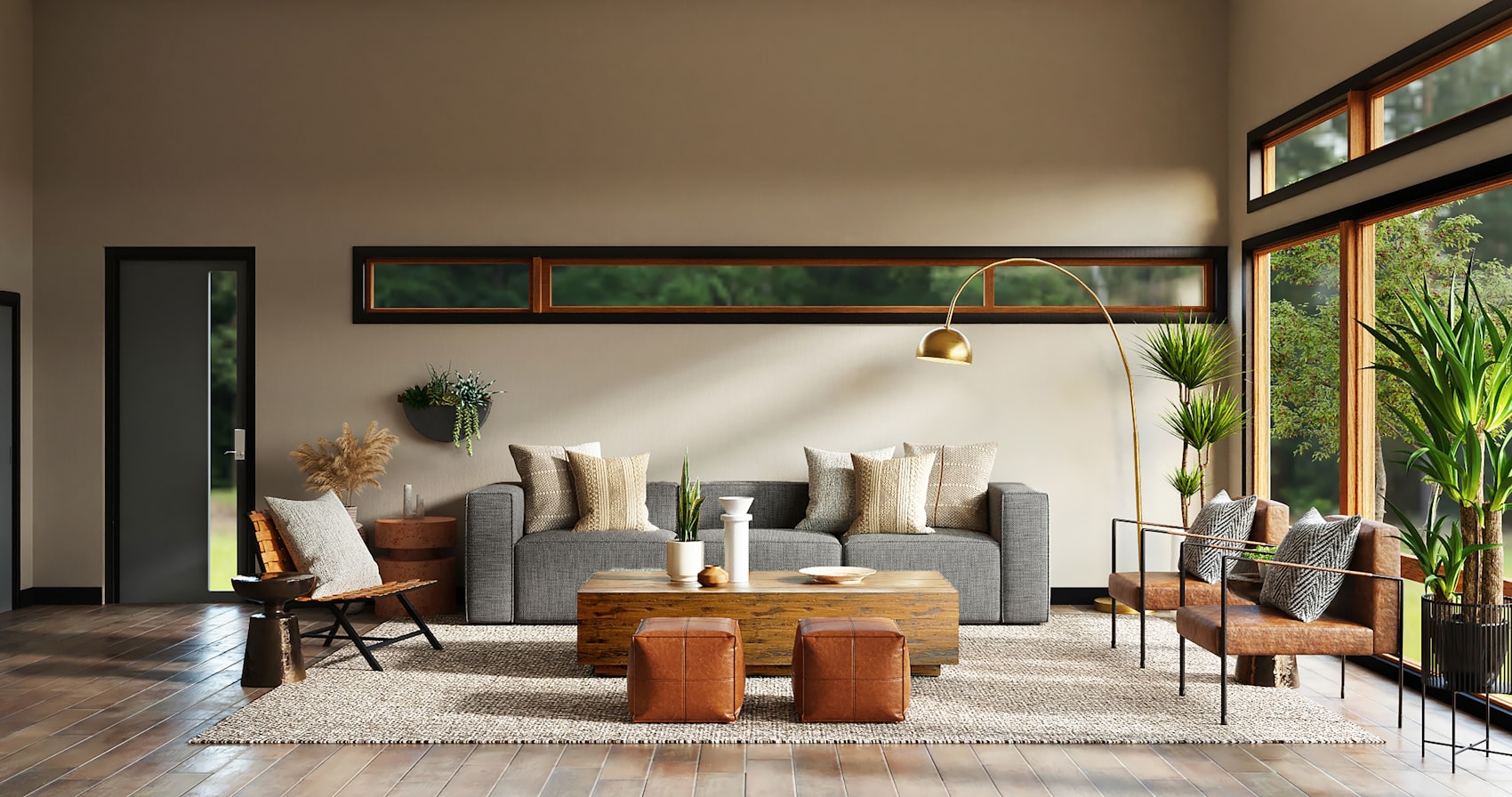
CONTEMPORARY
CONTEMPORARY: this interior design style focuses on currentness and creating a free-flowing space. Furniture pieces are often clean-lined and symmetrical, with no extra ornamentation or detail. Open living spaces and natural light, with an emphasis on materials such as metal, glass, concrete, and organic woods. The colors used in contemporary typically neutral, such as white or gray, with accent colors used to provide a splash of personality.
With its focus on clean lines, minimalistic elements and neutral colors, it is clear why many people have chosen to incorporate this aesthetic into their homes. Contemporary interior design works best in a modern living space with open floor plans and high ceilings. The common elements of this style include metal fixtures and bright, white walls.
Contemporary design often features furniture pieces with sleek lines and modern materials such as chrome and glass. Accessories like artwork, pillows, and rugs are used sparingly to maintain a clean-cut look. Furnishings may also be arranged in an asymmetrical pattern to create visual interest. The overall goal is to achieve harmony wonder that contemporary design style has become quite popular over the years.
There’s no specific time period for this next category making it’s interior design features ever expanding. This interior design style is constantly evolving and constantly adjusting to what’s happening now. It allows for the most freedom where interior design is concerned. Homes with this interior style are quite sleek and sophisticated. Furniture pieces often make simple but bold statements. Lighting fixtures are also statement pieces in these homes as well sculptural pieces and large artworks.

TRANSITIONAL
TRANSITIONAL: Transitional interior design style combines both traditional and modern influences to create a timeless, somewhat eclectic look. This style is all about balance and blending different elements together. This style of interior design bridges the gap between traditional and modern interiors, creating a look that is sophisticated and timeless.
Transitional interior design is just that transitional. It’s a cross between traditional and modern. In this particular interior style it’s safe to assume there are traditional elements with modern day comforts. In a transitional style home, you will often see a mixture of textures and colors in this interior style.
Transitional homes are typically decorated in a neutral color palette. This means you will see a lot of earth tones, whites, and different shades of cream. With that being said, transitional design is not afraid to incorporate pops of color. These can be found in accent walls, artworks, or rugs and throw blankets.
Even so, these textures and colors are kept to a minimum and usually exist in a generally neutral environment. In a transitional styled home you’ll often find fabrics include corduroy, leather, cotton, linen, silk etc. Transitional style also includes the use of natural materials, such as wood, stone, and tile. Furniture pieces usually have a straight line silhouette with soft curves. Accessories in this style are often used sparingly.
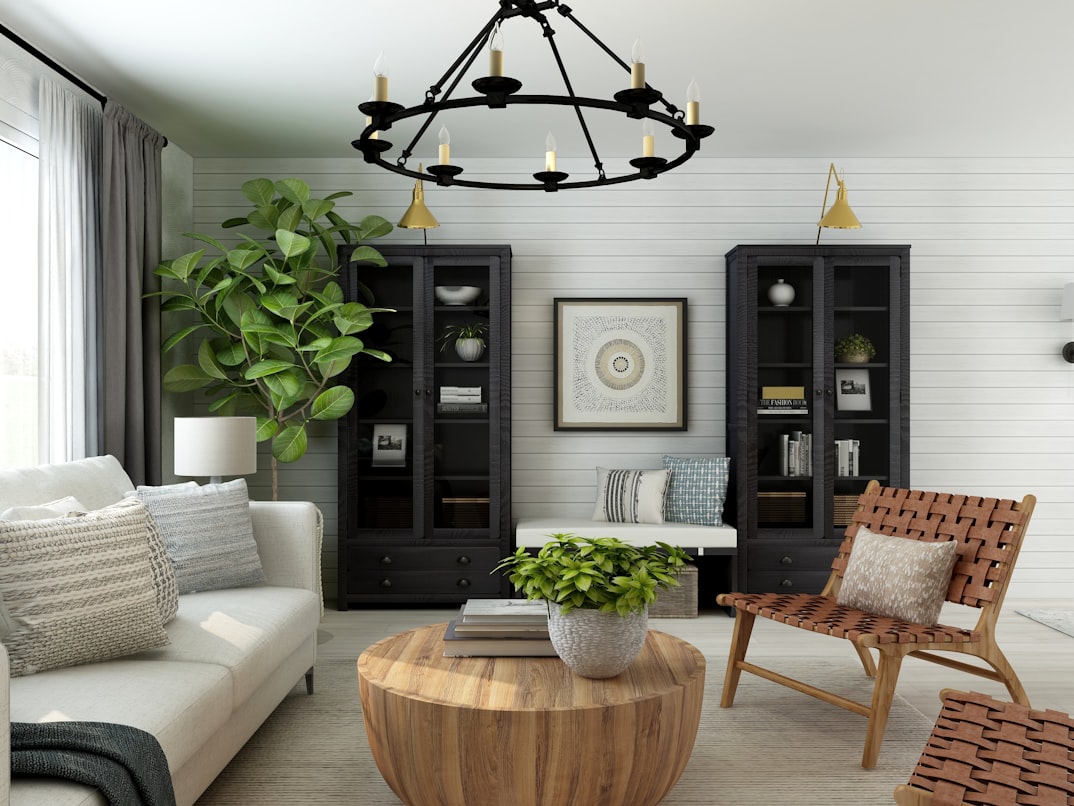
FARMHOUSE
FARMHOUSE: This interior design style is a combination of traditional elements with modern comforts. This style incorporates natural materials, distressed wood finishes and muted colors to create a warm and inviting atmosphere that is both rustic and homey.
Common furnishings for farmhouse style interiors include sofas, chairs, tables and benches made from wooden or wrought iron frames. Modern farmhouse home accessories like wicker baskets, jute rugs, mason jars and vintage decorations can be found throughout the home.
Aesthetically, this rustic style is often marked by its use of natural light and rustic decor. Furniture pieces in a farmhouse design typically include distressed finishes or unfinished woods for added character. The goal of this for the past” style is to create a relaxed, welcoming atmosphere that pays homage to its traditional roots.
Comparatively, this interior design style really plays up both rural and rustic elements. Equally charming are the architectural details that compliment the interior aesthetic. Cozy and including some definite modern elements, comfort and style are at the forefront. In the farmhouse interior style we see lots of natural woods incorporated into the space. In addition to that, we also see a mix and match of furniture.
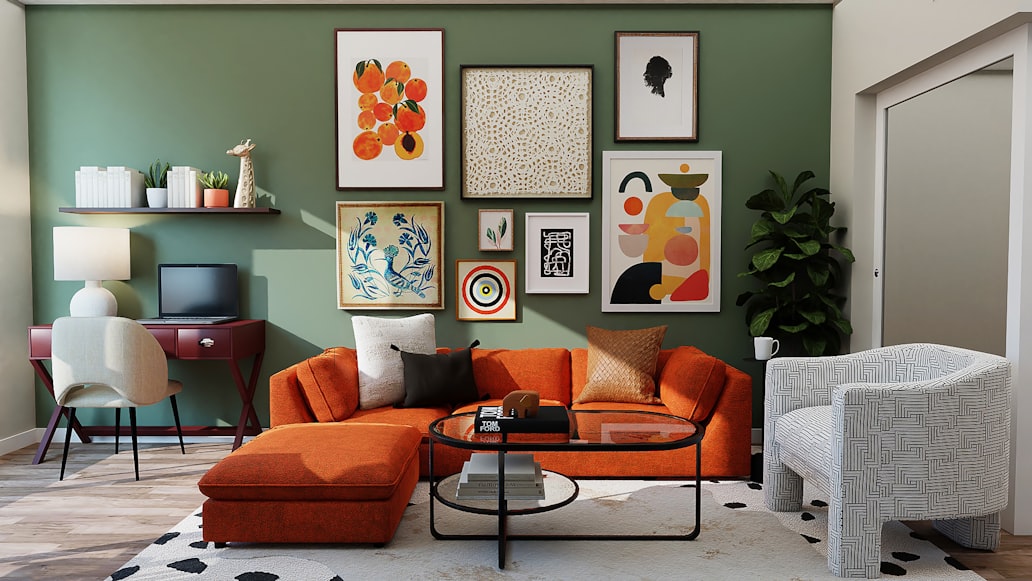
ECLECTIC
ECLECTIC: This interior design style celebrates mix and matching. The eclectic design style is all about creating something unique and special. This style can be described as a mash-up of colors, patterns, textures and materials.
Eclectic style interiors are characterized by their unconventionality, unique way of styling, unexpected combinations and anything goes attitude. This interior style takes inspiration from all different periods in design of colors, the eclectic interior style is known for its vibrant and energetic color palette.
This look typically involves a color scheme that includes bright colors such as yellow, orange, pink and blue. You’ll also find both rich colors and bold colors in accent pieces as well as home furnishings. As for patterns, eclectics often incorporate bold patterns and prints, unique motifs and geometric shapes into their design.
This style is all about creating an atmosphere that feels warm and inviting, so don’t be afraid to layer different textures. Eclectic interiors often feature interesting materials such as velvet, fur, wicker and rattan.
Despite its seemingly random and unplanned appearance, there is actually intentionality in its design. With this type of design, there needs to be cohesion and balance. To make this style work, one must understand the principles of color theory, texture, proportion and scale to create an effortless yet cohesive interior. The key to the eclectic look is to keep it aesthetically pleasing.
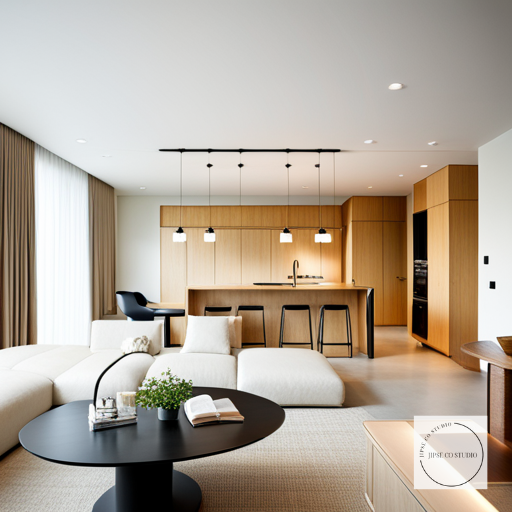
Designed by Jipsē Co Studio designer Sara K.
Organic Modern
ORGANIC MODERN: Organic modern decor and interior design is a style of decor that focuses on bringing natural and organic elements into the home to create a clean, minimalist aesthetic. This style emphasizes simplicity, functionality, and sustainability by incorporating raw materials such as plants, wood, stone, and glass into your home decor.
The Organic Modern style uses eco-friendly materials and colors inspired by nature, combined with a simple and contemporary design, to produce a cozy and sophisticated environment.The design features a blend of contemporary styles characterized by clean white finishes and straight lines, along with natural shapes, materials, and muted tones.
Organic modern also lends itself well to using neutral tones in order to create a calming and serene atmosphere in your home. This interior design style is the perfect blend of natural elements and modern, clean lines which creates a unique look that stands out yet still feels comfortable and inviting. Organic interior design is particularly popular among millennials due to its connection with nature and minimalist aesthetic, however, it works well for any homeowner looking to create a tranquil environment in their home.
A modern organic living room may feature natural wood flooring, a plush white shaggy rug, and a light gray sofa with geometric throw pillows. An organic modern kitchen may incorporate natural wood cabinets, stone countertops, and white subway tile. Interior design natural elements such as plants, knick-knacks, and other organic features can be added to any room to complete the look.
Hopefully learning the names of these different interior design styles and the various style elements will help guide you towards finding your own personal style! Of course there are far more interior design styles than just these ten such as japanese design, coastal design, bohemian design and many other sub categories that we’ll definitely go over on future posts. If you liked this article then follow for more!

Designed by Jipsē Co Studio designer Sara K.
SOUTHWESTERN
SOUTHWESTERN: Southwestern interior design is a style of decorating that combines the rustic charm of Spanish colonial architecture with a modern and contemporary aesthetic. The style is characterized by its use of natural materials, warm hues, and geometric patterns. The overall look of this style is one of relaxed elegance that celebrates the desert landscape found in countries like Mexico, Arizona, and California.
Modern southwest decor often features warm, earthy colors like terracotta, turquoise, and sage green paired with furniture made from natural materials like wood and stone. Accessories in a southwest style can include woven baskets, pottery, rugs, and artwork with Native American influences. Southwestern home decor often features unique wood furniture pieces, such as rustic coffee tables and armoires.
Southwestern style is perfect for anyone looking to create a cozy, vibrant home that celebrates the desert and the culture of the southwest. Whether you live in an arid climate or simply appreciate the beauty of the southwest, you can bring this style into your home.
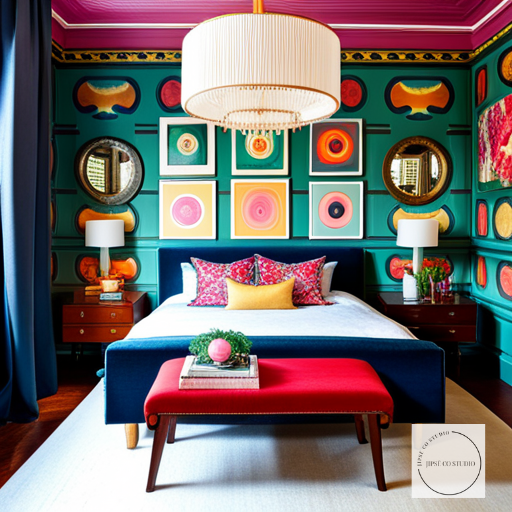
Designed by Jipsē Co Studio designer Sara K.
MAXIMALIST
MAXIMALIST: Maximalist interior design is a style that embraces bold color, patterns and textures all in the same space. It is characterized by opulent and luxurious materials and furniture, as well as an abundance of accessories. It is eclectic in nature, mixing different styles together creating a dynamic and lively atmosphere.
The key to maximalist design is creating balanced and harmonious spaces that are still highly impactful and visually pleasing. Maximalist interiors are often layered, with bold colors and patterns mixed to create a unique and inviting atmosphere.
While visually this design style seems similar to bohemian and eclectic designs, the difference lies in its purpose – maximalist interior design expresses a certain confidence and wealth within the composition. Maximalist designs are often seen as over-the-top and dramatic, but they can still be tasteful if done right. To achieve this look, combine several different styles, such as modern pieces with vintage items or rustic décor with contemporary elements.
Maximalist decor is all about self-expression and making a statement. The addition of art, sculptures, or statement pieces can also add depth and character to the room. In fact depth and drama is easy to achieve with moody maximalism , as you take an even more daring approach to this style.

Designed by Jipsē Co Studio designer Sara K.
BOHEMIAN
BOHEMIAN: Bohemian interior design is a popular style that embraces free-spirited, eclectic vibes. It features pieces from around the world, vintage finds, and bold colors. It often includes natural materials such as jute rugs, rattan furniture, and stone accents.
A bohemian interior design style can be achieved with layers of textiles, items found around the house, wall hangings, and vintage furniture. To get the look, mix and match patterns for a playful yet sophisticated style. Bold colors are used to bring life into a space, while still achieving balance. For example bohemian art and bohemian area rugs can be used to bring a dynamic mix of shapes and colors into a space.
Bohemian interior design is all about celebrating beauty in its simplest form. It is a style that doesn’t take itself too seriously and encourages creativity and personal expression. A bohemian bedroom for example can be decorated with a mix of old and new items, natural materials, and vintage furniture. In a bohemian interior design, the possibilities are endless!
Bohemian interior design is similar to both eclectic and maximalist designs in the sense that it embraces a mix of different styles, textures, and colors. It is all about breaking away from traditional design conventions and creating something entirely unique to the individual’s taste and style.

Designed by Jipsē Co Studio designer Sara K.
JAPANDI
JAPANDI: Japandi interior design is a stunning hybrid style that combines the best of Japanese and Scandinavian decor. This style focuses on creating a harmonious and tranquil atmosphere that is both functional and aesthetically pleasing.
Japandi interior design relies heavily on natural elements such as light woods, uncluttered designs, and neutral colors. This style is all about finding balance through the use of minimalism and simplicity. It also embraces natural materials such as bamboo, rattan, wool, and cotton to create a warm, inviting space.
In a japandi living room, you may find a mix of low-slung furniture with plenty of natural light, warm wood accents, and neutral colors. Accessories are kept to a minimum and focus on items like plants and art that add unique texture and personality to the space. A japandi bedroom, may feature calming colors like sage greens and slate blues as well as minimal furniture.
